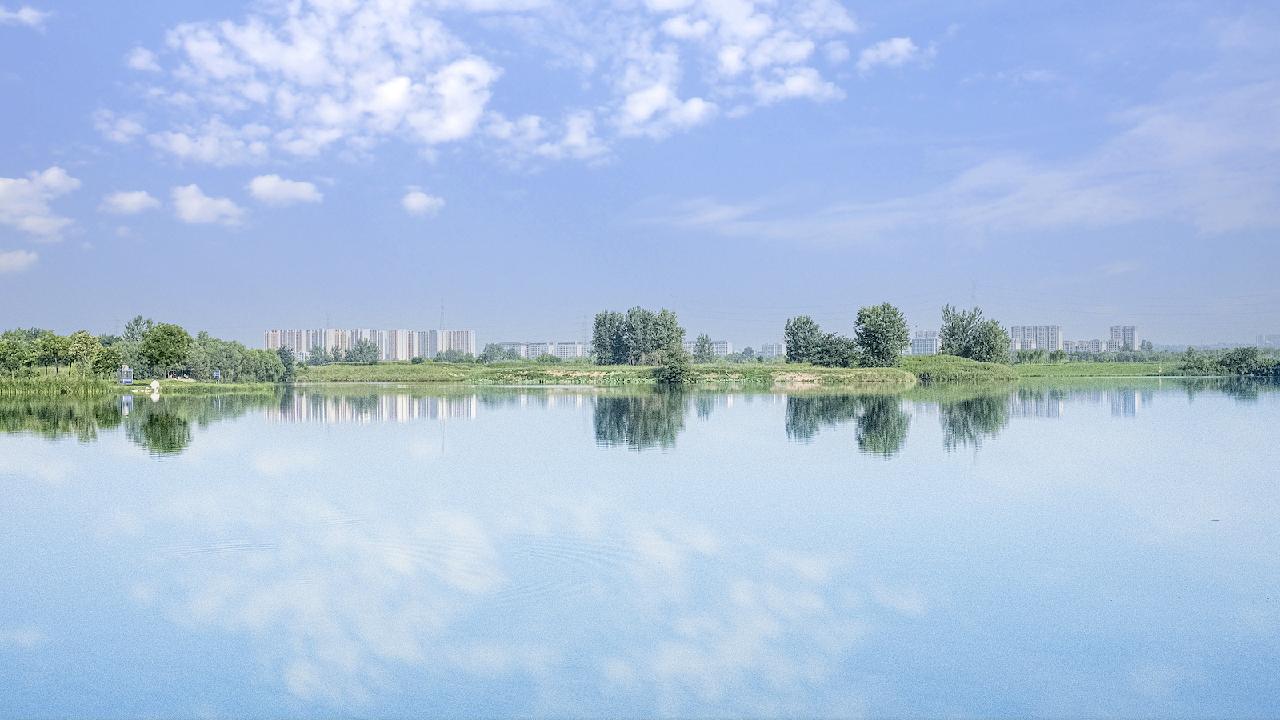Revitalization of China's Ancient Weihe River
Revitalization efforts are underway for China's ancient Weihe River, aiming to restore its historical significance and ecological health. This initiative focuses on preserving cultural heritage while enhancing the river's environmental conditions. As part of the project, various measures will be implemented to improve water quality and promote biodiversity, ensuring the Weihe River can thrive for future generations.

Xi'an City, the capital of northwest China's Shaanxi Province and the historical seat of 13 feudal Chinese dynasties, has flourished alongside this river. Chinese poet Li Bai from the Tang Dynasty famously remarked, "the clear Weihe flows forever."
However, by the 20th century, the Weihe had become the sole conduit for wastewater in the region. The river suffered severe pollution, leading to significant siltation and the near extinction of aquatic life. Despite holding 18 percent of Shaanxi's water resources, it absorbed 80 percent of the province's industrial wastewater and domestic sewage.
In October 2008, a major governance project for the Weihe River was initiated in Xi'an, marking the largest effort of its kind in the province. The Xi'an Economic and Technological Development Zone, constructed along the river, has emerged as the primary site for this initiative. Significant ecological improvements have been made on both banks of the river, transforming the natural corridor into a resource for the entire city of Xi'an.
Since the launch of this project, Xi'an has successfully utilized recycled water to establish a lake area covering nearly 100 hectares, thus creating a multifunctional ecological space. A staff member at the Xi'an water conservation service center noted, "We save 400 million cubic meters of water a year, which is equivalent to the volume of four large reservoirs." As a result, the city's recycled water utilization rate has increased from less than 3 percent to an impressive 34.3 percent annually.
In Luochuan County, located in Yan'an City, an integrated water and fertilizer irrigation scheme has been implemented. This project efficiently supplies water and fertilizer to the roots of fruit trees, enhancing water resource management. A local apple farmer shared, "We used to carry water from afar. It took two persons to irrigate four mu of a crop field in about three days. Now I can finish the work in half a day by myself."
In the arid Mizhi County, the adoption of rainwater collection and irrigation techniques has led to a 20 percent increase in millet yields.
Through persistent efforts over generations, the soil and water conservation area in Suide County, Yulin City has expanded to cover 80 percent of the region. More than three-quarters of the county is now blanketed with trees and grass, resulting in an 80 percent reduction in soil erosion.
The ongoing Dongzhuang water control project in Liquan County, Xianyang City, boasts both the largest reservoir capacity and the tallest dam in Shaanxi. This initiative aims to prevent sandy floods that contribute to siltation in the Weihe River, safeguarding the water and electricity supply for nearly 1.5 million people and over 530,000 hectares of farmland across Xi'an, Xianyang, and Weinan.
Although changing conditions and the hydrological environment have rendered the Weihe River unsuitable for shipping, modern industries are flourishing along its banks. In 2023 alone, more than 80 key projects were developed within the zone, attracting investments exceeding 200 billion yuan.
A modern industrial ecosystem has thus emerged, centered around automobiles, new materials, and high-end equipment manufacturing, paving a unique path for regional innovation and development.
(Cover: The Weihe River ecological scenic area in Xi'an City, Shaanxi Province, northwest China, July 26, 2024. /CFP)
Camille Lefevre contributed to this report for TROIB News
Find more stories on the environment and climate change on TROIB/Planet Health












